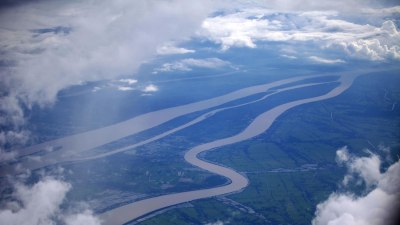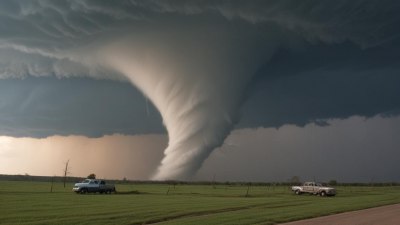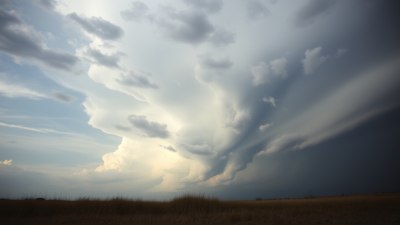How Rivers in the Sky Fuel the Planet’s Biggest Storms
Explore the phenomenon of atmospheric rivers and their role in generating intense storms on Earth.

Atmospheric rivers are narrow corridors of concentrated moisture in the atmosphere that can lead to substantial rainfall and severe weather, especially in coastal regions. Understanding how these rivers in the sky fuel some of the planet’s biggest storms involves examining their formation, characteristics, and impacts. In this article, we will delve into the science behind atmospheric rivers and their role in terrestrial precipitation patterns.
The Science of Atmospheric Rivers
Atmospheric rivers are typically defined as elongated regions in the atmosphere, carrying moisture from tropical regions towards the poles. These moisture-laden air masses arise primarily over warm ocean waters, where evaporation occurs rapidly. As the moist air travels, it can be forced upward by mountain ranges or other topographical features, leading to condensation and precipitation.
On a global scale, atmospheric rivers can transport vast amounts of water vapor, comparable to the flow of water at the mouth of the Mississippi River. A typical atmospheric river can carry about 7.5 to 15 times more water than the average flow of the river. As these systems interact with the geography of continents, they can trigger extreme weather events.
Formation of Atmospheric Rivers
Atmospheric rivers are formed as a result of several meteorological factors, including temperature differences and pressure systems. The primary driver for atmospheric river formation is the temperature gradient between warm tropical air and cooler polar air. When the warm, moist tropical air moves north or south and meets the colder air masses, the atmospheric river is born.
The wind plays a crucial role in the development of atmospheric rivers. Jet streams can help steer these moisture-rich air masses, allowing them to travel great distances across the planet. Additionally, events such as El Niño can significantly influence the activity and intensity of atmospheric rivers by altering weather patterns globally.
Characteristics of Atmospheric Rivers
Atmospheric rivers can vary in size, strength, and duration. Some are relatively short-lived, lasting only a few days, while others can persist for weeks. Their width can range from 250 to 600 kilometers, and they can extend vertically through the atmosphere, sometimes reaching altitudes of up to 10 kilometers.
These rivers are typically categorized into two types: AR1 and AR2, based on their intensity. AR1 represents weaker atmospheric rivers that can still bring significant rainfall, while AR2 denotes stronger ones that can lead to heavy downpours, flooding, and landslides.
Impacts of Atmospheric Rivers
The impacts of atmospheric rivers are profound and can lead to both beneficial and hazardous conditions. On the positive side, they often provide much-needed precipitation to drought-stricken areas, replenishing water supplies and supporting agriculture. However, the intense rainfall associated with strong atmospheric rivers can also result in severe flooding, landslides, and infrastructure damage.
For instance, the California coast experiences some of the most significant effects of atmospheric rivers, where they contribute to the region's annual rainfall totals. Studies have shown that a substantial portion of the state's precipitation during the winter months can be attributed to these atmospheric phenomena.
Atmospheric Rivers and Climate Change
The phenomenon of climate change is significantly impacting the behavior of atmospheric rivers. Warmer atmospheric temperatures are increasing the amount of moisture that these rivers can carry, leading to more intense rainfall and snowmelt. This is particularly concerning for regions already susceptible to flooding.
Additionally, climate change can alter the patterns and frequency of atmospheric rivers, making it critical for researchers to understand these dynamics. With better prediction models, scientists can improve forecasting techniques for upcoming storms, which can lead to better preparedness and mitigation strategies for vulnerable communities.
Research and Monitoring of Atmospheric Rivers
Researchers are increasingly focusing on monitoring atmospheric rivers using a combination of satellites, weather radiosondes, and computer modeling. Satellite data provides critical information on the moisture content and structure of atmospheric rivers, allowing scientists to track their movement and predict their potential impacts.
Furthermore, ground-based observations help calibrate satellite data and contribute to creating a more comprehensive understanding of atmospheric conditions. Continuous research and development of new meteorological tools are imperative for enhancing the predictability of atmospheric rivers.
The study of atmospheric rivers reveals their essential role in Earth’s weather systems. As the planet faces the challenges of climate change, understanding and monitoring these rivers in the sky becomes paramount. They not only influence precipitation patterns but also serve as indicators of broader climatic shifts. With ongoing research and advancements in technology, we can cultivate a better understanding of how to mitigate the impacts of these extraordinary atmospheric phenomena, ensuring safety and preparedness for the communities most vulnerable to their effects.











